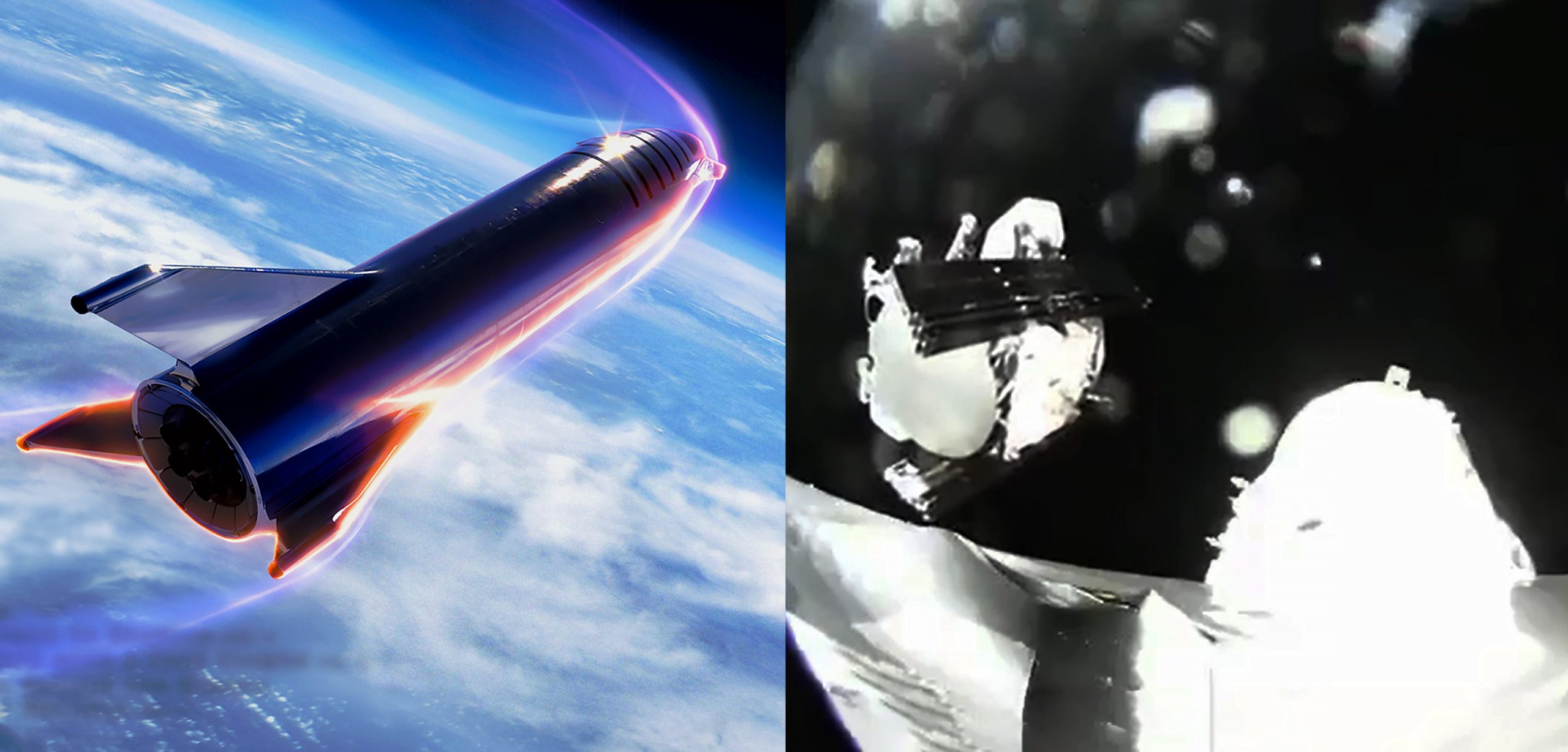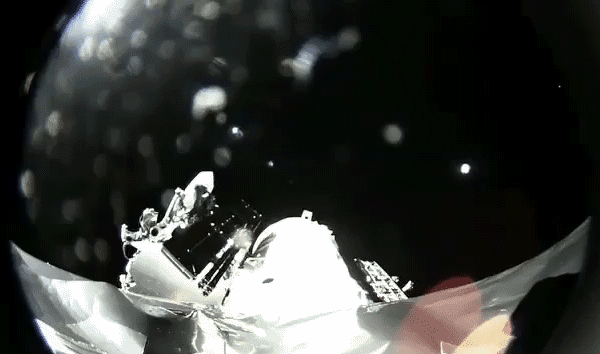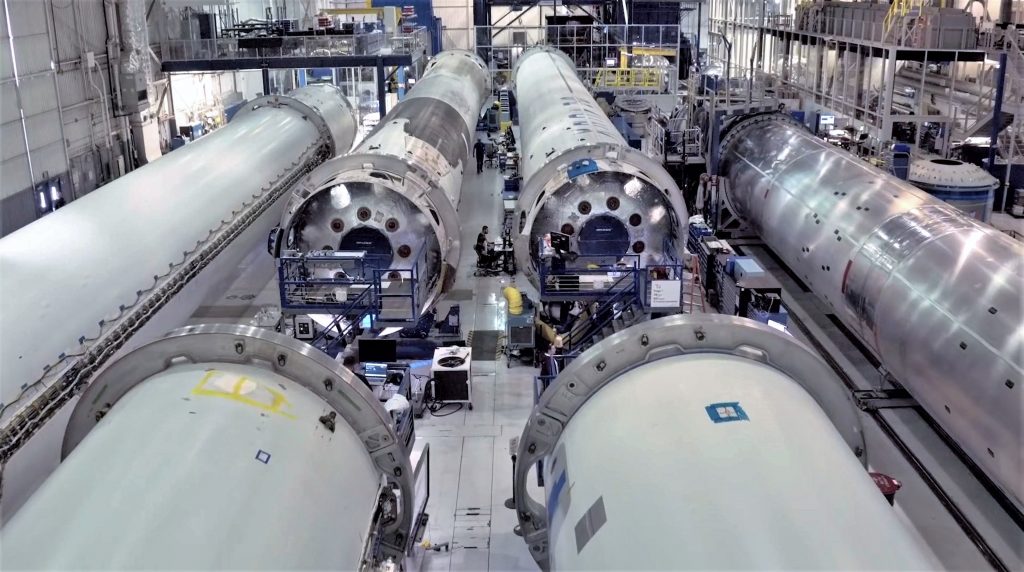

News
SpaceX preps second $500M fundraiser as Starlink & Starship make progress
According to regulatory documents seen by Prime Unicorn Index, SpaceX finished a $500M funding round begun in December 2018 and kicked off a second campaign seeking an additional $500M earlier this month.
Altogether, SpaceX appears to be on track to secure $1 billion in fresh capital in the last six months alone, a trend that that may well continue as the company pushes forth into new and capital-intensive phases of Starlink and Starship development. In Boca Chica, a flood of SpaceX engineers and technicians have descended on the area to build the first full-scale steel prototypes of Starship and the major facilities needed to support the vehicles, all from scratch. Across the West Coast of the US, a separate SpaceX team has simultaneously transitioned from prototyping and developing satellites to building a factory to mass-produce them and may be less than six weeks away from launching the first operational batch of Starlink spacecraft.
Giant rockets, giant funding
Both massive, perilous, and largely unprecedented ventures in their own right, Starship (formerly BFR) and Starlink also happen to be extremely capital-intensive, a more or less fundamental consequence of the stages of their development and expansion. Both spent many years in pure research and development phases, tinkering and experimenting with different ideas and technologies on the ground in an effort to conceptualize what exactly their final forms ought to be. This aspect of the BFR program has been extremely visible over the last three years as SpaceX and CEO Elon Musk’s goals underwent continuous semi-annual changes, often intentionally broadcasted to the public in
After appearing to finally settle on the quasi-final form of BFR (renamed to Starship/Super Heavy), SpaceX has actually begun to build and test the first full-scale, integrated prototype of the spacecraft (Starhopper) and is simultaneously building what aims to be the first orbital Starship prototype. At the same time, its propulsion system of choice – known as Raptor – has entered into serial production back at SpaceX’s Hawthorne factory, while also supporting the first Starhopper hop test in early April and preparing to continue separate ground testing.

Thousands of satellites, billions of dollars
In February 2018, SpaceX successfully launched its first Starlink satellites, two prototypes meant to test a bevy of technologies the company was attempting to build (or at least utilize) for the first time. Despite hints and reports of some problems on orbit, SpaceX firmly holds that both satellites were extremely successful in their task of proving out new technologies like electric thrusters and phased-array antennas and are still safely operating today. Just four months after those prototypes launched, CEO Elon Musk took the extraordinary step of flying to Redmond, Washington to personally challenge a number of executives he believed were operating far too sluggishly. According to secondhand reports, many of them refused to expedite the program as Musk wanted them to, resulting in their immediate firings. The challenge that triggered the organizational upheaval: launch the first operational batch of Starlink satellites before the end of June 2019, twelve months away at the time.
Five months after Musk’s challenge, SpaceX submitted a request to the FCC to modify its original Starlink constellation license, halving the orbit of the first thousand or so satellites to 550 km (340 mi) and significantly simplifying the technology on the first several dozen to be launched. As a result of the strategic changes made, SpaceX is already planning to launch its first group of Starlink satellites as early as mid-May, with perhaps one or several additional launches on the books for 2019. To an extent, the first 75 Starlink satellites and their six ground stations will be a nearly full-fidelity second prototype. Instead of a minimalist development platform like Tintin A and B, the first 75 satellites should offer opportunities to actually test the operations of a large constellation of spacecraft while also demonstrating something close to the internet connectivity the full constellation is meant to offer.

Development to production
That SpaceX is attempting to raise huge amounts of capital should come as no surprise. For almost any commercial venture on Earth that is attempting to introduce a real product from nothing, the process of going from concept, design, and testing to building a final product at scale is both extraordinarily difficult and extremely expensive. Tesla famously went through “manufacturing hell” to go from Model 3 prototypes to a mass-producible finished product, while countless other ventures don’t even make it that far (i.e. vaporware). By far the most challenging aspect of this transition is moving from a phase focused predominately on development to one focused predominately on production.
Due to an extremely unorthodox approach to building the first steel Starship and Super Heavy prototypes, quite literally choosing to do so outside and without shelter, the BFR program is probably less extreme for the time being. However, the transformation needed for Starlink to progress is intense, requiring the satellite team to essentially build a factory from scratch and begin mass-producing high-performance satellites as quickly as possible. The 75-satellite buffer should ease the pain a bit and offer a sort of trial run as SpaceX makes that major transition, but the fact remains that an unprecedented number (thousands) of satellites will need to be built and launched at an equally unprecedented pace and cost-per-unit.

The $500M raised since December 2018 will likely be a major help for SpaceX’s often-
Check out Teslarati’s Marketplace! We offer Tesla accessories, including for the Tesla Cybertruck and Tesla Model 3.

Elon Musk
Elon Musk’s X will start using a Tesla-like software update strategy
The initiative seems designed to accelerate updates to the social media platform, while maintaining maximum transparency.

Elon Musk’s social media platform X will adopt a Tesla-esque approach to software updates for its algorithm.
The initiative seems designed to accelerate updates to the social media platform, while maintaining maximum transparency.
X’s updates to its updates
As per Musk in a post on X, the social media company will be making a new algorithm to determine what organic and advertising posts are recommended to users. These updates would then be repeated every four weeks.
“We will make the new 𝕏 algorithm, including all code used to determine what organic and advertising posts are recommended to users, open source in 7 days. This will be repeated every 4 weeks, with comprehensive developer notes, to help you understand what changed,” Musk wrote in his post.
The initiative somewhat mirrors Tesla’s over-the-air update model, where vehicle software is regularly refined and pushed to users with detailed release notes. This should allow users to better understand the details of X’s every update and foster a healthy feedback loop for the social media platform.
xAI and X
X, formerly Twitter, has been acquired by Elon Musk’s artificial intelligence startup, xAI last year. Since then, xAI has seen a rapid rise in valuation. Following the company’s the company’s upsized $20 billion Series E funding round, estimates now suggest that xAI is worth tens about $230 to $235 billion. That’s several times larger than Tesla when Elon Musk received his controversial 2018 CEO Performance Award.
As per xAI, the Series E funding round attracted a diverse group of investors, including Valor Equity Partners, Stepstone Group, Fidelity Management & Research Company, Qatar Investment Authority, MGX, and Baron Capital Group, among others. Strategic partners NVIDIA and Cisco Investments also continued support for building the world’s largest GPU clusters.
News
Tesla FSD Supervised wins MotorTrend’s Best Driver Assistance Award
The decision marks a notable reversal for the publication from prior years, with judges citing major real-world improvements that pushed Tesla’s latest FSD software ahead of every competing ADAS system.

Tesla’s Full Self-Driving (Supervised) system has been named the best driver-assistance technology on the market, earning top honors at the 2026 MotorTrend Best Tech Awards.
The decision marks a notable reversal for the publication from prior years, with judges citing major real-world improvements that pushed Tesla’s latest FSD software ahead of every competing ADAS system. And it wasn’t even close.
MotorTrend reverses course
MotorTrend awarded Tesla FSD (Supervised) its 2026 Best Tech Driver Assistance title after extensive testing of the latest v14 software. The publication acknowledged that it had previously criticized earlier versions of FSD for erratic behavior and near-miss incidents, ultimately favoring rivals such as GM’s Super Cruise in earlier evaluations.
According to MotorTrend, the newest iteration of FSD resolved many of those shortcomings. Testers said v14 showed far smoother behavior in complex urban scenarios, including unprotected left turns, traffic circles, emergency vehicles, and dense city streets. While the system still requires constant driver supervision, judges concluded that no other advanced driver-assistance system currently matches its breadth of capability.
Unlike rival systems that rely on combinations of cameras, radar, lidar, and mapped highways, Tesla’s FSD operates using a camera-only approach and is capable of driving on city streets, rural roads, and freeways. MotorTrend stated that pure utility, the ability to handle nearly all road types, ultimately separated FSD from competitors like Ford BlueCruise, GM Super Cruise, and BMW’s Highway Assistant.
High cost and high capability
MotorTrend also addressed FSD’s pricing, which remains significantly higher than rival systems. Tesla currently charges $8,000 for a one-time purchase or $99 per month for a subscription, compared with far lower upfront and subscription costs from other automakers. The publication noted that the premium is justified given FSD’s unmatched scope and continuous software evolution.
Safety remained a central focus of the evaluation. While testers reported collision-free operation over thousands of miles, they noted ongoing concerns around FSD’s configurable driving modes, including options that allow aggressive driving and speeds beyond posted limits. MotorTrend emphasized that, like all Level 2 systems, FSD still depends on a fully attentive human driver at all times.
Despite those caveats, the publication concluded that Tesla’s rapid software progress fundamentally reshaped the competitive landscape. For drivers seeking the most capable hands-on driver-assistance system available today, MotorTrend concluded Tesla FSD (Supervised) now stands alone at the top.
News
Elon Musk’s Grokipedia surges to 5.6M articles, almost 79% of English Wikipedia
The explosive growth marks a major milestone for the AI-powered online encyclopedia, which was launched by Elon Musk’s xAI just months ago.

Elon Musk’s Grokipedia has grown to an impressive 5,615,201 articles as of today, closing in on 79% of the English Wikipedia’s current total of 7,119,376 articles.
The explosive growth marks a major milestone for the AI-powered online encyclopedia, which was launched by Elon Musk’s xAI just months ago. Needless to say, it would only be a matter of time before Grokipedia exceeds English Wikipedia in sheer volume.
Grokipedia’s rapid growth
xAI’s vision for Grokipedia emphasizes neutrality, while Grok’s reasoning capabilities allow for fast drafting and fact-checking. When Elon Musk announced the initiative in late September 2025, he noted that Grokipedia would be an improvement to Wikipedia because it would be designed to avoid bias.
At the time, Musk noted that Grokipedia “is a necessary step towards the xAI goal of understanding the Universe.”
Grokipedia was launched in late October, and while xAI was careful to list it only as Version 0.1 at the time, the online encyclopedia immediately earned praise. Wikipedia co-founder Larry Sanger highlighted the project’s innovative approach, noting how it leverages AI to fill knowledge gaps and enable rapid updates. Netizens also observed how Grokipedia tends to present articles in a more objective manner compared to Wikipedia, which is edited by humans.
Elon Musk’s ambitious plans
With 5,615,201 total articles, Grokipedia has now grown to almost 79% of English Wikipedia’s article base. This is incredibly quick, though Grokipedia remains text-only for now. xAI, for its part, has now updated the online encyclopedia’s iteration to v0.2.
Elon Musk has shared bold ideas for Grokipedia, including sending a record of the entire knowledge base to space as part of xAI’s mission to preserve and expand human understanding. At some point, Musk stated that Grokipedia will be renamed to Encyclopedia Galactica, and it will be sent to the cosmos.
“When Grokipedia is good enough (long way to go), we will change the name to Encyclopedia Galactica. It will be an open source distillation of all knowledge, including audio, images and video. Join xAI to help build the sci-fi version of the Library of Alexandria!” Musk wrote, adding in a later post that “Copies will be etched in stone and sent to the Moon, Mars and beyond. This time, it will not be lost.”








